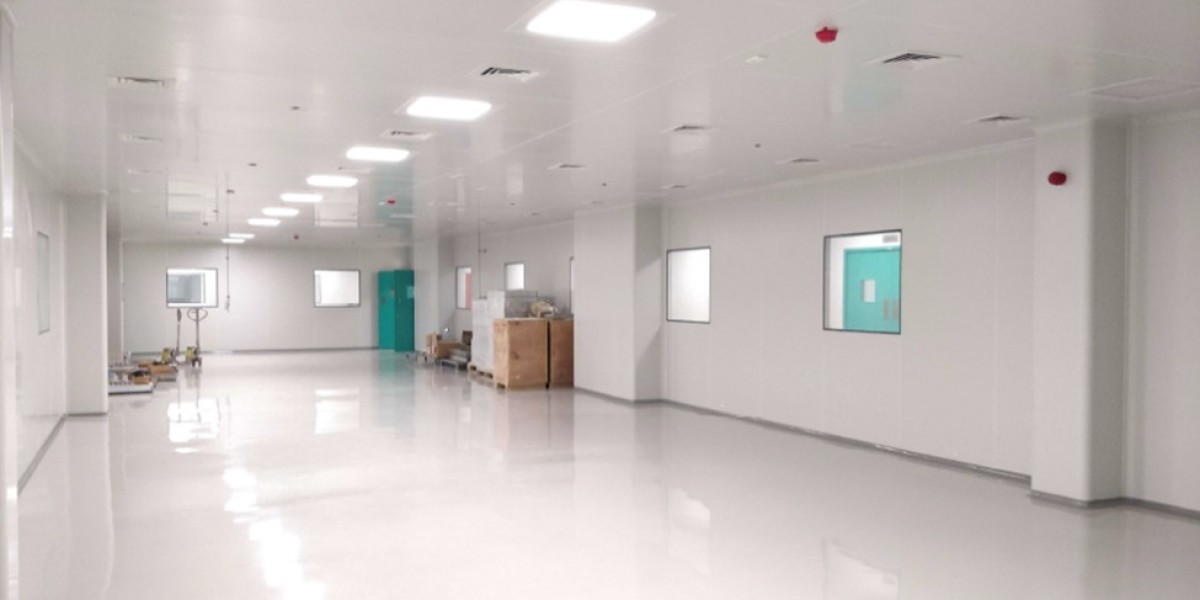Cleanrooms play a vital role in maintaining sterility and ensuring a contamination-free environment for medical and pharmaceutical applications. In this detailed guide, we will delve into the intricacies of cleanrooms, their significance in medical applications, and how they contribute to improved safety and quality in healthcare.
What is a Cleanroom?
A cleanroom is a controlled environment where pollutants such as dust, airborne microbes, aerosol particles, and chemical vapours are minimized. These rooms are essential in industries like biotechnology, pharmaceuticals, and healthcare to ensure the sterility and integrity of processes and products.
Key Features of a Cleanroom
- Air Filtration Systems: High-efficiency particulate air (HEPA) or ultra-low penetration air (ULPA) filters are used to eliminate airborne contaminants.
- Controlled Environmental Parameters: Temperature, humidity, and pressure are meticulously monitored and maintained.
- Specialized Materials: The surfaces, walls, and equipment inside a cleanroom are designed to prevent particle accumulation and microbial growth.
- Strict Protocols: Personnel entering the cleanroom must follow stringent protocols, including wearing protective clothing and following decontamination procedures.
Importance of Cleanrooms in Medical Applications
In the medical field, the necessity of cleanrooms cannot be overstated. They ensure that medical devices, pharmaceuticals, and other healthcare products are manufactured in a contamination-free environment, safeguarding patient health.
Pharmaceutical Manufacturing
Pharmaceutical products must meet rigorous safety and quality standards. Cleanrooms provide an optimal environment for the production of drugs, minimizing contamination and ensuring compliance with regulatory requirements.
- Sterile Formulations: Cleanrooms are essential for preparing sterile injections, vaccines, and intravenous fluids.
- Quality Control: These environments ensure consistent quality, reducing the risk of recalls and adverse patient outcomes.
Medical Device Production
Medical devices like implants, surgical instruments, and diagnostic tools require precision manufacturing in a clean environment.
- Contamination-Free Assembly: Cleanrooms eliminate the presence of particles and microbes that could compromise device functionality or patient safety.
- Regulatory Compliance: Adherence to ISO 13485 and other global standards is facilitated by cleanroom operations.
Biotechnology and Research
In biotechnology, cleanrooms are critical for cell culture, gene therapy, and other advanced medical research.
- Controlled Experiments: Cleanrooms ensure the accuracy and reliability of experimental outcomes by minimizing contamination risks.
- Safety in Handling Pathogens: They provide a safe environment for handling hazardous biological materials.
Cleanroom Classifications
Cleanrooms are categorized based on the number and size of particles permitted per volume of air. The classification system helps industries choose the appropriate cleanroom for their specific needs.
ISO Classifications
The ISO 14644-1 standard is widely used for cleanroom classification:
- ISO Class 1: The cleanest environment, with the least permissible particles.
- ISO Class 5: Commonly used in pharmaceutical and medical device manufacturing.
- ISO Class 8: Less stringent, suitable for less sensitive operations.
Federal Standard 209E
This older classification system includes:
- Class 100: Equivalent to ISO Class 5.
- Class 10,000: Equivalent to ISO Class 7.
- Class 100,000: Equivalent to ISO Class 8.
Key Components of a Medical Cleanroom
HVAC Systems
Heating, ventilation, and air conditioning (HVAC) systems maintain the cleanroom’s temperature, humidity, and pressure levels. The system ensures optimal airflow to reduce particle accumulation.
Air Filters
HEPA and ULPA filters are critical for removing contaminants. They are tested regularly to ensure consistent performance.
Flooring and Walls
Cleanrooms use non-porous, smooth, and easy-to-clean materials. Epoxy and vinyl are common choices for floors, while walls are often made of high-pressure laminate or stainless steel.
Protective Gear
Personnel wear specialized clothing, including:
- Gowns and Gloves: To prevent contamination from skin and clothing particles.
- Face Masks and Eye Protection: To reduce the risk of airborne contaminants.
Cleanroom Protocols
Strict protocols are implemented to maintain the integrity of cleanrooms.
Entry and Exit Procedures
Personnel must pass through airlocks and changing areas.
- Protective clothing must be donned in a specific sequence to minimize contamination risks.
Cleaning and Maintenance
- Regular cleaning schedules are adhered to, using approved disinfectants and techniques.
- Equipment is sterilized routinely to prevent microbial growth.
Monitoring and Testing
- Particle Counters: Measure the concentration of particles in the air.
- Microbial Sampling: Detects the presence of bacteria, fungi, and other microorganisms.
Challenges in Maintaining Medical Cleanrooms
Operating a cleanroom for medical purposes comes with unique challenges:
- Stringent Regulatory Compliance: Adhering to standards like GMP (Good Manufacturing Practices) can be demanding.
- High Operational Costs: Energy-intensive systems and specialized equipment require significant investment.
- Continuous Training: Personnel must stay updated on best practices to ensure compliance and effectiveness.
Future Trends in Cleanroom Technology
Automation and Robotics
Robotics and automation reduce human error and contamination risks, enhancing cleanroom efficiency.
Sustainability Initiatives
Eco-friendly cleanrooms are being developed to reduce energy consumption and environmental impact.
Advanced Monitoring Systems
Real-time monitoring and AI-driven analytics are improving the precision and responsiveness of cleanroom operations.
Conclusion
Cleanrooms are indispensable in the medical field, ensuring the production of safe, high-quality pharmaceuticals, medical devices, and research outcomes. By adhering to stringent standards and leveraging advanced technologies, cleanrooms play a critical role in safeguarding public health and advancing medical innovation.



